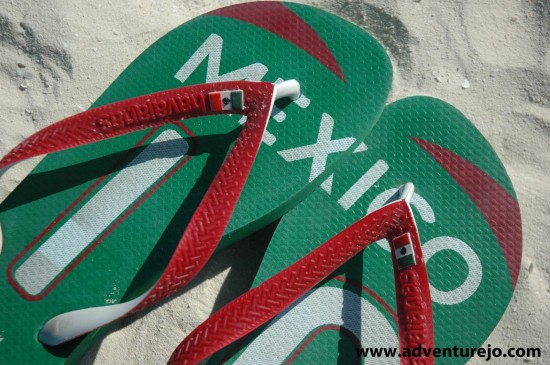1. Respect the country and its laws– It never ceases to amaze me how so many travelers act as though Mexico were a fairytale land where laws were meant to be broken and every police officer is open to bribery. Yes, Mexican police are grossly underpaid and corruption is quite common, but don’t assume that all police officers are corrupt and out to make a buck. Corruption has been recognized as a problem that needs to be fixed and steps are being taken to clean up the force. When foreigners act as though they can do whatever they want and get away with it, the police and Mexicans at large consider this very disrespectful. It is quite common to hear Mexicans say in disgust “We could never do that in your country”, and they are right – they couldn’t.

In addition respecting the law, try to avoid saying anything that implies that your country is better than Mexico. Don’t point out the obvious problems like illegal immigration, the drug war, or other contentious issues. As they should be, Mexicans are a proud people and are well aware of the problems, making yourself/country out to be superior won’t make you any new friends.
A note on drug use: The Mexican government is currently engaged in a war against the drug cartels, so be aware of who and what you get involved with. You don’t want to be made “the example” to all other foreigners who break the law.
2. Learn some Spanish – So you don’t speak a word of Spanish. No need to panic – most people working in the tourism industry speak a fair bit of English. However, learning just a few key Spanish words and phrases will go a long way in developing a rapport with any Mexican you meet. Trying to speak – no matter how ridiculous it may sound – shows that you have gone the extra mile and you don’t ‘expect’ Mexicans to speak your language. You will be surprised as to how far simple words like ‘hola’ (hello) and ‘gracias’ (thank you) will take you. If you plan on staying in a resort all day, English will do just fine, but if you plan on seeing the country and taking the road less traveled, the more time you invest into your Spanish, the more rewarding your experience will be.

3. Blend in: I am a black male, so in Mexico I blend in as much as a giraffe in nightclub. Instead of doing the impossible, I try not to stick out. I often see travelers with their shiny watches, coach handbags and flashy designer clothes that scream – ‘rob me’. I know, your outfit just isn’t complete without that $400 accessory, but to put things in perspective, that’s about 80 days pay for someone struggling to survive on the daily minimum wage. I’m not suggesting that you try to look poor, just take it down a few notches. If you are hoping to be more interactive and to see areas with higher levels of poverty, standing it the last thing you want to do.
4. Tip: A friend in the tourism industry in Puerto Vallarta once told me a joke that I found extremely funny but equally embarrassing. It goes like this – “What’s the only difference between a canoe and a Canadian? Answer: A canoe tips.” See what I mean? Really funny – if you aren’t Canadian. Generally, base salaries in the tourism industry are very low and tips make up the lion’s share of an employee’s total income. In my opinion, not having any local change for a tip is an unacceptable excuse. If you arrive in Mexico without any local money (pesos) you can change your dollars at the airport, at any of the plentiful ‘casas de cambios’ (money houses), or withdraw some at an instant teller machine (ATM). More on using ATMs and credit cards in Mexico from Trans-America Journey.
Although the daily minimum wage in Mexico varies slightly by area, it is roughly 56 pesos (≅$5) per day. A quick conversion is $1 = 10 pesos. Whether you are at an all-inclusive resort or a hostel, your tips are greatly appreciated. Bagging clerks at grocery stores, taxi drivers, waiters, bartenders, bellboys, and baggage handlers are just a few people you should expect to tip for their good service.
5. Do your research: Most countries have a handful of areas (or many handfuls) where crime is significantly higher than the norm – most times fraught with higher levels of poverty and unemployment. In many such areas, foreigners are essentially dangling fruit, ripe for the picking.
If you are traveling in Mexico, there are some places where it isn’t advisable to go sightseeing when the sun goes down. As a matter of fact, there are some areas that you should try to avoid even on the brightest of days. Sure you want to experience ‘real Mexican culture’, but do you really need to find that experience in Ciudad Juarez? A simple internet search can equip you with enough information to make smarter decisions about where to go, when to go and what to avoid. Another good starting point would be a Lonely Planet, Frommer’s, or Moon guidebook.
See what travel expert Journey Mexico has to say about ‘Safety in Mexico’
Bonus Read: 28 TIPS FOR TRAVELING WITH A LAPTOP AND SLR
(from www.whereisjenny.com)





Great post! I agree with much of what you've said – especially the learn some Spanish. It amazes me how many people here in Puerto Vallarta are basically "proud" of the fact that they don't speak Spanish and expect Mexicans to cater to their barked orders. It's like a lot of North Americans have forgotten their in a foreign country with its own culture and language.
I know exactly what you mean. When I lived in Vallarta I found it odd that many expats didn't speak more than five words of Spanish and didn't care to learn. I think that one of the advantages of living in or spending extended periods in Mexico is the opportunity to learn Spanish. What was even more mind boggling was hearing tourists ask – "Why don't they speak English here?"
You make me want to visit Mexico! Great Post Jo!!